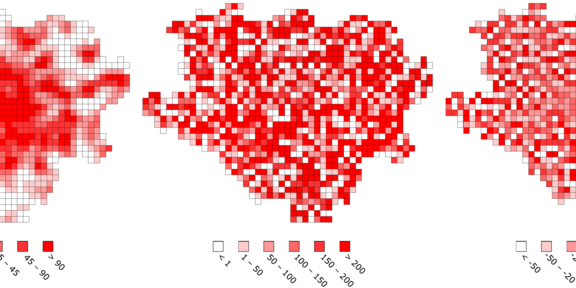New Book Chapter: Introduction to Spatial Analysis

Spatial analysis is concerned with disclosing and understanding spatial structures. The latter play a major role in many investigations of urban spaces, for example when it comes to epidemiological issues, infrastructures and their effects, or socio-economic processes. However, spatial analysis differs from non-spatial statistics in important ways. The additional models of spatial interdependencies that have to be considered complicate the drawing of inferences and make the correct interpretation of corresponding statistical measures more difficult. Many introductions to spatial statistics are written either from a statistical and thus very formal point of view, or from an overly applied perspective. The former discourages many students of applied or empirical disciplines, while the latter often leads to the conveyance of too limited technical detail and thus too little methodological understanding. The newly published book chapter 'Exploratory statistical analysis of spatial structures in urban datasets' by René Westerholt attempts to bridge these two perspectives as well as possible. The chapter first motivates the engagement with spatial-statistical methods in an application-driven way by giving an overview of a wide range of applications of corresponding methods from different urban research fields. Then, using Moran's I as an example, the essential characteristics of spatial statistics are elaborated. This is done deliberately via the bypass of the correlation measure Pearson r, since this measure is well known to the vast majority of empirical students and researchers. By explaining the differences between r and Moran's I, both conceptually and technically, a sufficiently deep understanding of the differences in spatial statistics is established. After the technical introduction, the reader is presented with specialised measures for more challenging issues such as the analysis of flows or rate variables. Overall, the chapter is intended to be of assistance to both advanced students of spatial disciplines in the broadest sense, but also to corresponding researchers who wish to learn more about spatial statistics.
The chapter has been published open access and can be found online:
Westerholt, R. (2022). Exploratory statistical analysis of spatial structures in urban datasets. In: Gurr, J., Parr, R. and Hardt, D. (eds.): Metropolitan Research: Methods and Approaches. Bielefeld, Germany: transcript, 37–61.

